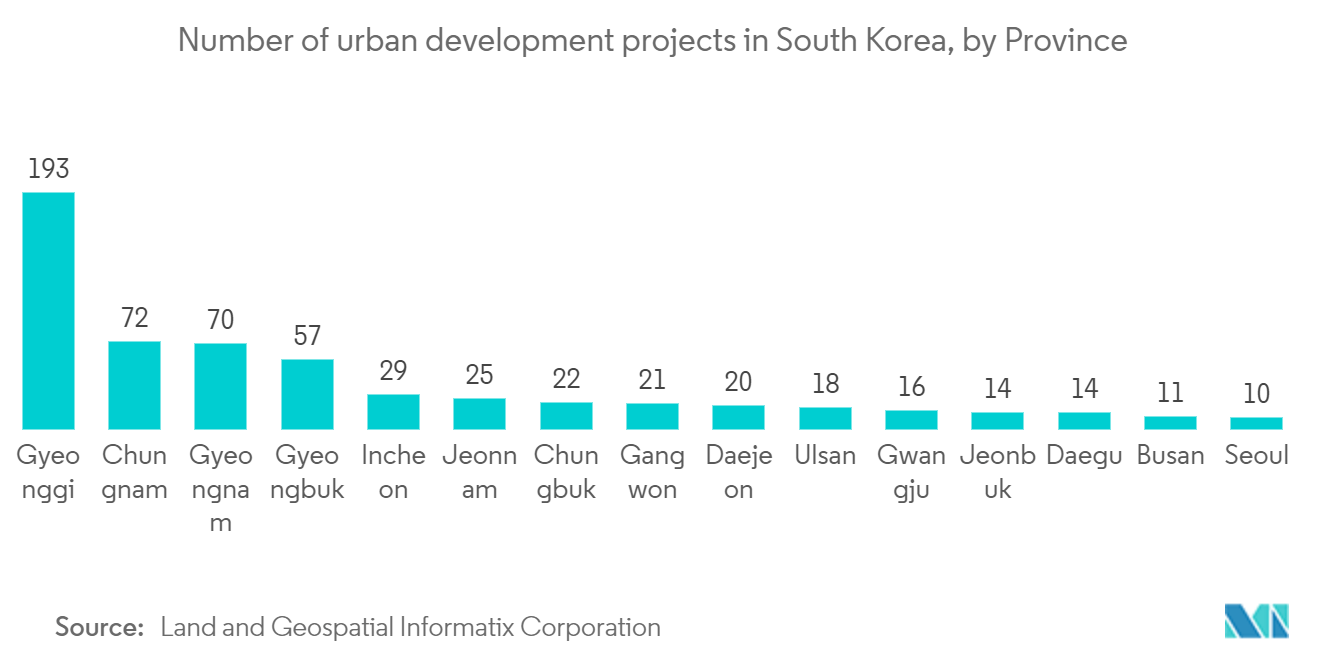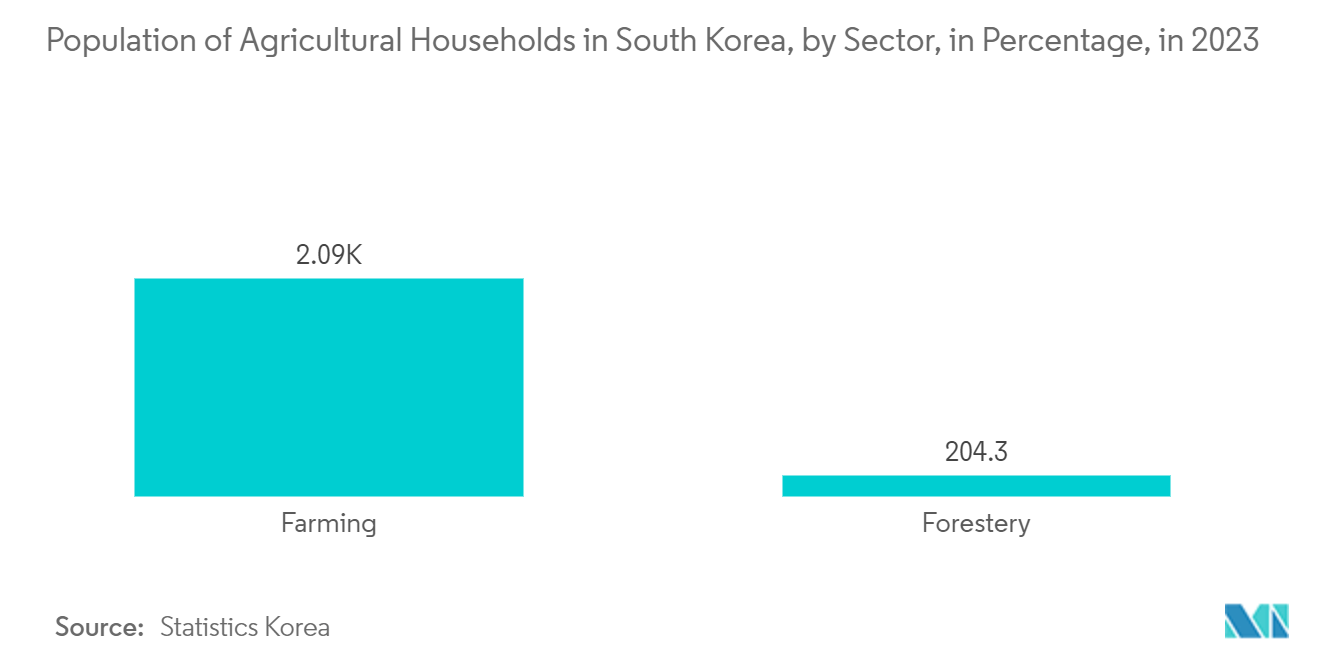Market Trends of South Korea Geospatial Analytics Industry
Increasing Demand for Geospatial Analytics for Smart Cities Development and Urban Planning
- South Korea strongly focuses on infrastructure development, including smart cities, transportation networks, and sustainable development. Geospatial analytics is crucial in planning, designing, and monitoring these infrastructure projects, leading to increased demand for related services. For instance, Incheon Metropolitan is one of the largest cities in South Korea, which has utilized a digital twin and its geospatial infrastructure to become a smart city. The digital twin allows city agencies and the public to engage and collaborate in addressing present and future challenges.
- Also, In November 2022, Korea's Ministry of Land, Infrastructure and Transport (MOLIT) assigned Asan City, which is among 5 assigned cities to implement Korea's Digital Twin project. The project has 30 people working on a geospatial team to survey roads, waterways, and buildings across the city's 542 square km. MOLIT is developing the Digital Twin National Land Platform to manage the data.
- Around 10 cities in South Korea are smart cities, which are expected to increase. The digital twin will rely on data collection for smart mobility, demographics, tourism, and other factors. Government organizations use the 3D building models to analyze options and opportunities to support decision-making. In the coming future, it is predicted that All4Land will work on a 3D geospatial project of Osan for the South Korea National Mapping Agency (NGII).
- Moreover, Geospatial analytics plays a crucial role in enhancing public safety and emergency response capabilities. By integrating geospatial data with other information systems, South Korea can analyze the location and distribution of emergency services, identify high-risk areas, and optimize emergency response routes. Geospatial analytics also aids in real-time monitoring of natural disasters, such as earthquakes and floods, enabling timely warnings and evacuation plans.

Increasing Use of Geospatial Analytics in Agricultural Sector
- South Korea continuously uses geospatial analytics in the agricultural sector and has been increasingly utilizing it to improve agricultural practices, enhance productivity, and ensure sustainable food production.
- Geospatial analytics allows farmers to monitor and manage their crops more efficiently. Satellite imagery and aerial surveys provide valuable data on vegetation indices, crop health, and growth patterns. By analyzing this data, farmers can identify areas of concern, such as nutrient deficiencies or pest outbreaks, and take timely actions, such as targeted fertilization or pest control, to optimize crop growth.
- The South Korean agricultural situation is expected to change in the future. There has been some precision-related research and development under the concept of \Low Input Sustainable Agriculture in Korea. And Geospatial analytics plays a significant role in this. As it focuses on optimizing inputs and minimizing environmental impacts. By integrating geospatial data with other sources, such as soil sensors and weather data, farmers can create site-specific management plans. This approach enables the precise application of fertilizers, irrigation, and pesticides, resulting in improved resource efficiency, reduced costs, and minimized environmental impact.
- Moreover, Geospatial analytics helps in mapping and analyzing soil properties across agricultural areas in the country. By combining soil samples with geospatial data, such as topography and land cover, South Korea creates detailed soil maps that provide information on soil type, fertility, and moisture content. This knowledge enables farmers to make informed decisions regarding crop selection, irrigation practices, and soil management techniques.


